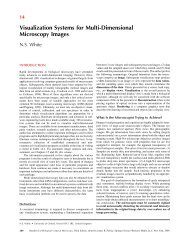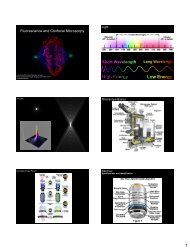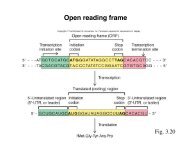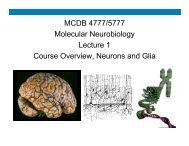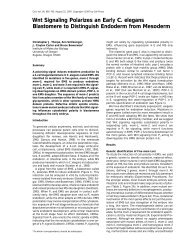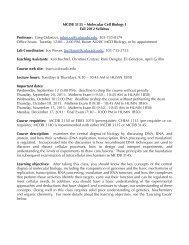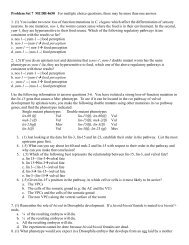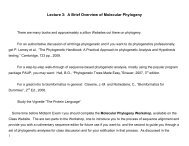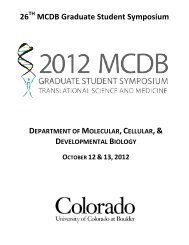Lecture 2: Describing Microbial Diversity: the ... - MCD Biology
Lecture 2: Describing Microbial Diversity: the ... - MCD Biology
Lecture 2: Describing Microbial Diversity: the ... - MCD Biology
You also want an ePaper? Increase the reach of your titles
YUMPU automatically turns print PDFs into web optimized ePapers that Google loves.
C. Indeed, <strong>the</strong> tree is a quantitative estimate – a metric - for that slippery concept, amount of evolution. The<br />
“amount of biological diversity” (for any particular molecule) might be <strong>the</strong> summation of all unique line segment-<br />
lengths in a comprehensive tree.<br />
11.Some lessons from <strong>the</strong> Big Tree:<br />
27<br />
A. There was a single origin for terrestrial type of life -- all life forms are related.<br />
B. Three “primary lines of evolutionary descent” -- ”Domains” -- “ur-kingdoms”: Eucarya (eucaryotes),<br />
Bacteria, Archaea (originally called “archaebacteria”, but <strong>the</strong> name was changed when it became clear that<br />
<strong>the</strong> things aren’t bacteria.)<br />
1. Sometimes see referred to as “kingdoms,” but usage in this context is probably not a good idea -- too<br />
historically loaded.<br />
2. You can inject "time" into tree, but sequence change is not necessarily linear with time - indeed, probably it<br />
usually isn't.





